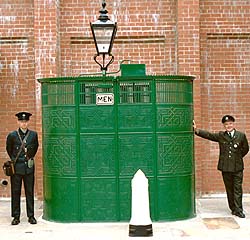Geoscientist 19.8 August 2009

In 1830 the geologist and mining consultant Thomas Weaver (1773-1855), already famous for his work on Irish geology and involvement in Irish metal mining, dived into the great Devonian debate when he published the first of his many papers discussing the age of rocks in Devon – a controversy that ultimately led to the naming of the Devonian system by Roderick Murchison and Adam Sedgwick in 1839.
Although Weaver had already donated many fossil and mineral specimens to the Geological Society and the Yorkshire Philosophical Society during his lifetime, after his death in 1855 there still remained a substantial collection to be disposed of. Part was sold at auction in July 1855. What remained, reportedly, was used to form the hard core for a urinal at Bewdley, Worcestershire.
A sad end, but perhaps an appropriate one. Coprology – or the study of fossil faeces – attracted serious attention in the 1830s from fossilists and luminaries ranging from Mary Anning and the Misses Philpott to William Buckland. Work on this topic even formed the subject for such verses as:
Approach, approach, ingenuous youth
And learn this fundamental truth
The noble science of Geology
Is bottomed firmly in Coprology
Had he lived on into the 1860s when the Society moved to its current home in Burlington House, Weaver – a member since 1820 – might well have built on this theme by taking the opportunity to augment his Devonian field observations every time he visited. The two urinal stalls in the Gents – reportedly known affectionately as "Darwin" and "Huxley" – are composed of a deep red Upper Devonian (Frasnian) Griotte Marble, taken from quarries west of the River Meuse in Belgium, and beautifully embellished with stromatactis structures (large irregular cavities filled with calcite cement) and concentrations of fossils.
Acknowledgments
Sources for this vignette include the entry for Thomas Weaver (1773-1855), geologist and mining consultant by Hugh Torrens, in the Oxford Dictionary of National Biography; with additional reporting by Ted Nield at the Geological Society, and Philip Powell of the Oxford University Museum of Natural History.
- If the past is the key to your present interests, why not join the History of Geology Group (HOGG). For more information visit the HOGG website at: www.geolsoc.org.uk/hogg.
* Nina Morgan lives in Oxfordshire.